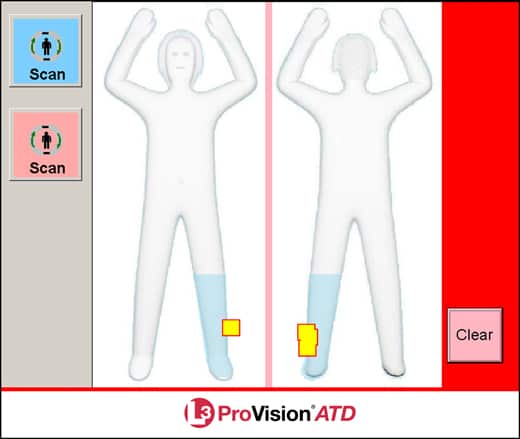One Year Later: TSA Still Flouting the Law on Body Scanners


The Transportation Security Administration (TSA) uses more than 700 full-body imaging scanners in 160 airports nationwide. In addition to the empirical evidence that shows they don’t actually make us safer and the questions on the intrusion of traveler privacy, the TSA is violating the federal Administrative Procedure Act. Next Tuesday, June 24, marks the one-year anniversary of the public comment deadline on body scanners and the TSA is still failing to comply with federal law and a federal court’s order.
Why is this important to the average citizen? The TSA’s scanners inconvenience travelers, provide few if any safety benefits, and face high deployment costs. The limited data available suggest body scanners are a completely inappropriate airport security tool and should be scrapped in favor of more effective and less intrusive security measures. Given this, the TSA's thumbing its nose at the rule of law is especially troubling.
The Administrative Procedure Act, which governs how federal agencies create regulations like airport body-scanners, states that agencies must publish a notice of proposed rulemaking in the Federal Register and solicit public comments before promulgating a rule. TSA failed to do this and has been flouting the law for years. Here is a timeline of events:
- In 2008, the TSA begins deploying body scanners in airports.
- In 2010, the Electronic Privacy Information Center (EPIC) files suit against the TSA, alleging deployment of the airport body scanners violates the Fourth Amendment and Administrative Procedure Act.
- In July 2011, the D.C. Circuit Court of Appeals finds the TSA in violation of the Administrative Procedure Act and orders the TSA to “promptly” open a rulemaking proceeding regarding the use of body-scanners in airports.
- In July 2012, the TSA has still not complied with the court’s order. EPIC files a petition for writ of mandamus to enforce the court’s July 2011 order. The Competitive Enterprise Institute (CEI) files an amicus brief supporting EPIC, bringing together a diverse coalition of nine organizations and Robert L. Crandall, the former longtime Chairman and CEO of American Airlines.
- In September 2012, the court denies EPIC’s petition, but effectively orders a deadline for the TSA to produce the rule “before the end of March 2013.”
- On March 26, 2013, the TSA finally proposes their rule and opens the required comment period. However, it fails to comply with the court’s order to produce a legislative rule governing the use of body scanners in airports. Instead, the TSA proposes a brief, open-ended amendment to their screening regulations that essentially states the TSA might have body scanners and, if it does, it may use them. This is a far cry from the legislative rule the court ordered to be produced in 2011, a rule that should have included details related to the rights and obligations of affected parties. The TSA also fails to justify their rule on benefit-cost and risk-based grounds and classifies other supposed justifications for no apparent reason.
- CEI files comments expanding on these points on June 24, 2013, the final day of the comment period. These comments are joined by Robert L. Crandall.
Next Tuesday will mark the one-year anniversary of the comment period closing and TSA still has not responded to comments or developed the legislative rule mandated by the D.C. Circuit. We are now approaching half a decade of lawlessness at the TSA.
This may seem like a complex government technicality with no real-world implications that sits outside the purview of the general public. However, this is far from the case. The TSA directly threatens the traveling public by defying federal law and federal court orders.
As my colleague Hans Bader wrote in CEI’s amicus brief supporting EPIC, “The TSA airport screening policies affect millions of Americans yet passengers still have no opportunity to participate in TSA rulemaking.” While the court-mandated comment period was eventually opened, the TSA’s proposed rule failed to meet the court’s standards, the rule’s justification was wholly inadequate, and after one year, the agency is still in violation of federal law.
Furthermore, the Congressional Research Service notes that “experts are divided about the effectiveness” of body scanners. The Government Accountability Office reported that it is “unclear” if body scanners are at all effective in detecting body-borne explosives.
Not only that, but the TSA implicitly concedes its use of body scanners will fail to prevent terrorist attacks. Assuming the machines actually could detect body-borne explosives, which is most likely false, approximately 1,800 would need to be deployed in American airports. But with less than half that currently deployed, a terrorist intent on downing an airliner with body-borne explosives would simply need to find an airport security line without body scanners.
But the main reason Americans should be outraged by the TSA’s continued lawlessness with respect to body scanners is that post-9/11 aviation security theater is likely killing people. When invasive measures such as mandatory shoe-removal and body scanners began inconveniencing air travelers after 9/11, there was a large observed drop in short-haul flights. Three Cornell University economists began research into where these short-haul air travelers went and concluded that a significant share of them took to the roads rather than flying. Due to the much larger safety risks associated with highway travel over air travel, the three estimated that several hundred additional road deaths could be annually attributed to post-9/11 aviation security policies.
The TSA is probably killing far more people than it is saving, yet it refuses to comply with basic public interest protections. And unfortunately, their lawless approach to body scanner deployment is likely just the tip of the iceberg. It’s time for the American people and their representatives in Congress to demand serious aviation security reform.